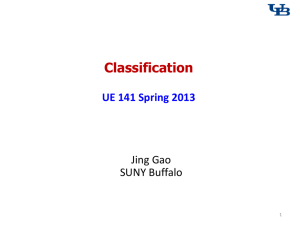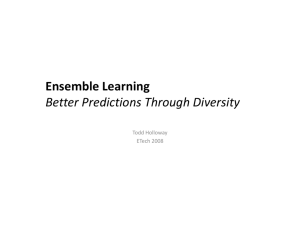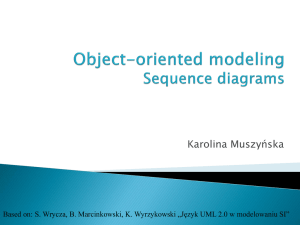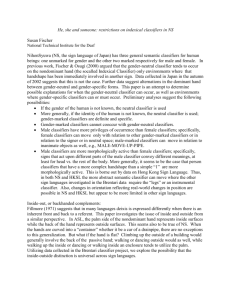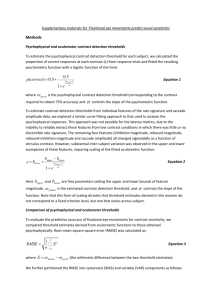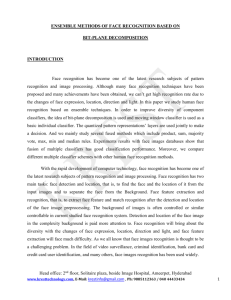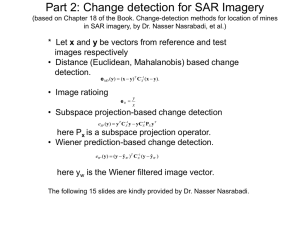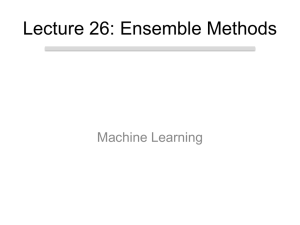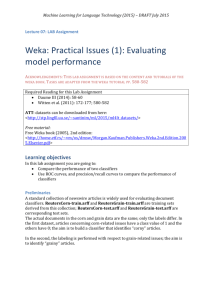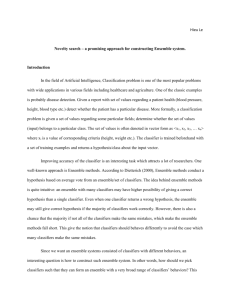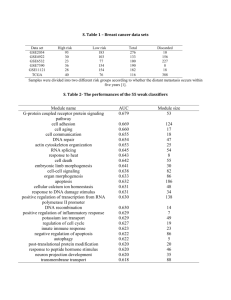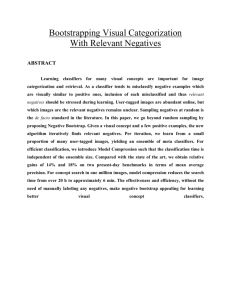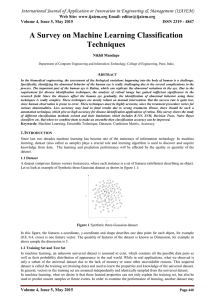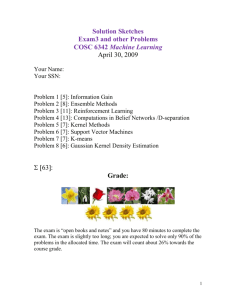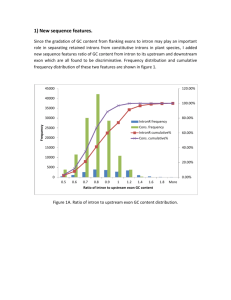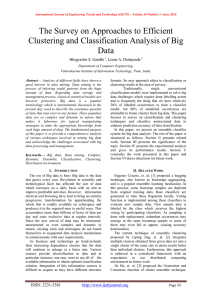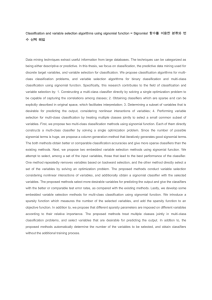Title of the paper [14pt Times New Roman, bold
advertisement
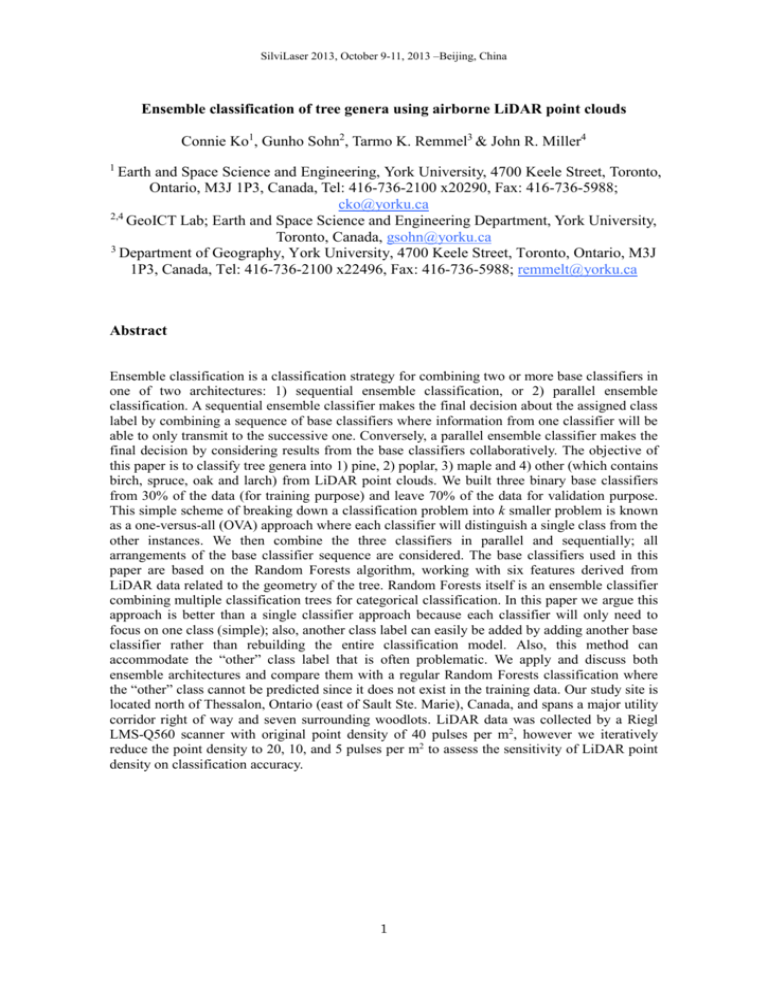
SilviLaser 2013, October 9-11, 2013 –Beijing, China Ensemble classification of tree genera using airborne LiDAR point clouds Connie Ko1, Gunho Sohn2, Tarmo K. Remmel3 & John R. Miller4 1 Earth and Space Science and Engineering, York University, 4700 Keele Street, Toronto, Ontario, M3J 1P3, Canada, Tel: 416-736-2100 x20290, Fax: 416-736-5988; cko@yorku.ca 2,4 GeoICT Lab; Earth and Space Science and Engineering Department, York University, Toronto, Canada, gsohn@yorku.ca 3 Department of Geography, York University, 4700 Keele Street, Toronto, Ontario, M3J 1P3, Canada, Tel: 416-736-2100 x22496, Fax: 416-736-5988; remmelt@yorku.ca Abstract Ensemble classification is a classification strategy for combining two or more base classifiers in one of two architectures: 1) sequential ensemble classification, or 2) parallel ensemble classification. A sequential ensemble classifier makes the final decision about the assigned class label by combining a sequence of base classifiers where information from one classifier will be able to only transmit to the successive one. Conversely, a parallel ensemble classifier makes the final decision by considering results from the base classifiers collaboratively. The objective of this paper is to classify tree genera into 1) pine, 2) poplar, 3) maple and 4) other (which contains birch, spruce, oak and larch) from LiDAR point clouds. We built three binary base classifiers from 30% of the data (for training purpose) and leave 70% of the data for validation purpose. This simple scheme of breaking down a classification problem into k smaller problem is known as a one-versus-all (OVA) approach where each classifier will distinguish a single class from the other instances. We then combine the three classifiers in parallel and sequentially; all arrangements of the base classifier sequence are considered. The base classifiers used in this paper are based on the Random Forests algorithm, working with six features derived from LiDAR data related to the geometry of the tree. Random Forests itself is an ensemble classifier combining multiple classification trees for categorical classification. In this paper we argue this approach is better than a single classifier approach because each classifier will only need to focus on one class (simple); also, another class label can easily be added by adding another base classifier rather than rebuilding the entire classification model. Also, this method can accommodate the “other” class label that is often problematic. We apply and discuss both ensemble architectures and compare them with a regular Random Forests classification where the “other” class cannot be predicted since it does not exist in the training data. Our study site is located north of Thessalon, Ontario (east of Sault Ste. Marie), Canada, and spans a major utility corridor right of way and seven surrounding woodlots. LiDAR data was collected by a Riegl LMS-Q560 scanner with original point density of 40 pulses per m2, however we iteratively reduce the point density to 20, 10, and 5 pulses per m2 to assess the sensitivity of LiDAR point density on classification accuracy. 1
